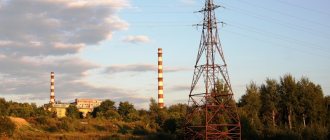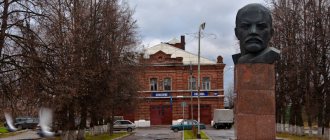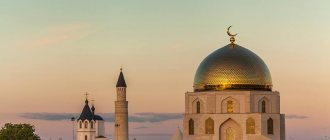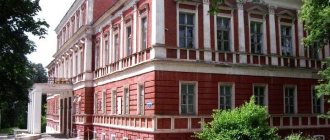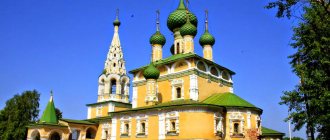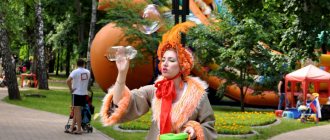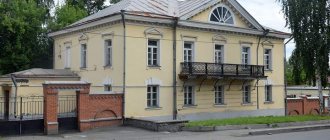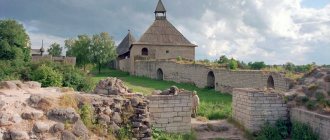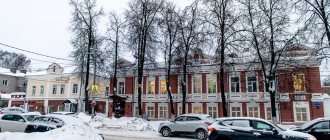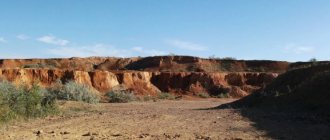| First day Second day What else to see on the second day What to see in 2 days in winter What to see in autumn Sightseeing tours Where to go from Minsk for 2 days Where to stay in Minsk |
In Minsk, in 2 days you can get to know the rich culture of the city, which skillfully combines Soviet and European history. Thanks to its beauty and well-groomed environment, Minsk also tops the ranking of CIS cities for virtual tours. Creating your own walking route around the city, taking into account the huge amount of information that can be found on the Internet, is an absolutely feasible task for a tourist.
First day in Minsk
On the first day, it is best to explore the very heart of Minsk - the city center. The main number of attractions is located here, including many museums, cathedrals, squares and parks, architectural structures and sculptures. Seeing all the beauties of the city in 2 days is a difficult task, but seeing the main memorable places of Minsk is quite possible.
"Gates of Minsk"
It is symbolic to begin a tour of the capital of Belarus from the “Minsk Gate”, which is located on the station square. The complex is represented by two twin towers of 11 floors each, located at the corners of 5-story residential buildings. From the first minutes, the Stalinist Empire architecture welcomes guests with open arms and evokes admiration for its luxury.
The towers were built in 1953. On the left tower of the “Gate of Minsk” there is a large German-made clock. On the opposite tower in a similar place is the coat of arms of the former BSSR. “The Gates of Minsk” is a symbol of the city, which is often depicted both on souvenirs and on postage stamps.
Photo: © Darius A
Independence Square
Initially, the square was named after the leader of the revolution V. Lenin, but after the collapse of the USSR it was renamed Independence Square. On the square there is the Government House, which is designed in the style of Soviet constructivism, the Main Post Office, the main hotel "Minsk" and the famous Red Church. Without going far from Independence Square, you can visit the Museum of the History of Belarusian Cinema , which is located in the park of Edward Voinilovich, the initiator of the construction of the church.
There is a fountain on the square, which in the evening entertains visitors with a light and music program. In the dome of the fountain there are three storks, as well as the coats of arms of all the cities of the country. Like the Minsk Gate, the fountain on Independence Square is often depicted on various souvenirs. This is where Independence Square never ceases to amaze - right below it there is an underground 3-story shopping center "Stolitsa" .
More details: Independence Square
Photo: © Darius A
Church of St. Simeon and St. Helena
It is also the Red Church, located on Independence Square. A Catholic church built entirely of red brick in the neo-Romanesque style. It was erected at the beginning of the 20th century. The building was built with the money of the Belarusian nobleman E. Voinilovich, who lost two children. Voinilovich insisted that the church be named in honor of the patrons of his deceased children: St. Simeon and St. Helena.
During Soviet times, the Red Church was repeatedly closed and passed from hand to hand. In the 90s of the last century, the church was returned to the Catholic Church. Today, church services are held in this building and various events are organized. Next to the Catholic church there are 2 sculptures: the Nagasaki bell and the monument to Archangel Michael.
Details: Red Church
Photo: © vladkonst
National Historical Museum of the Republic of Belarus
Initially it was the museum of the Minsk Church Archaeological Committee, created in 1908. During the First World War it was evacuated to Ryazan, and in 1912 it was renamed the Minsk City Museum. It consisted of five departments: archaeological, natural science, historical, artistic and industrial and ethnographic. The museum's fund was constantly replenished through voluntary donations, and the first full-fledged exhibition opened in 1913.
The museum developed and expanded, but during the Great Patriotic War most of the collections were stolen and destroyed. However, the museum did not cease to exist and today it houses approximately 370 thousand exhibits. The number of valuable items is constantly increasing. Now the museum has 10 exhibition and exhibition halls, and also conducts active scientific work.
More details: National History Museum
Historical Museum on Google maps panoramas
Upper town
It is also called the High Market. This is not only the very center of the city, but also its historical heart, which is adored by both tourists and locals. The upper city is the name given to the new center of Minsk, which began to be founded back in the 16th century. By the beginning of the 18th century it was completely built up. This is how the individual image of Minsk was formed.
Today this place pleases with the abundance of restored buildings of the 16th–18th centuries. On the territory of the Upper Town there are the Cathedral of the Descent of the Holy Spirit , the Church of St. Joseph , the Church of the Holy Spirit, the Minsk Horse Horse Museum, the Cathedral of the Blessed Virgin Mary , the Theater named after. M. Gorky , Gostiny Dvor and much more. According to one legend, the Upper City is riddled with underground passages that connect the main temples.
The Upper Town is the heart of Minsk. Here you can plunge deeper into Belarusian history. The majesty of ancient buildings, cozy streets and cafes, and a gorgeous view of the Svisloch River make the most powerful impression.
Photo: © Anna Kudryavtseva
City Hall (Minsk Town Hall)
on Freedom Square in the Upper Town. It was erected after the city acquired Magdeburg rights from the Polish king and the prince of the Grand Duchy of Lithuania. At that time, this meant that the city had the right to independently create local governments. This event was significant for Minsk. The town hall building was destroyed in 1857.
The modern town hall is a building completely recreated in 2003, which hosts all kinds of exhibitions. All of them are dedicated to history and Magdeburg law. In addition, the building contains a model of the city at the beginning of the 19th century. The second floor of the town hall is used to receive important guests and hold meetings. The town hall is decorated with the city's coat of arms and a large clock.
Read more: City Hall
Photo: © Anna Kudryavtseva
Cathedral of the Descent of the Holy Spirit
This cathedral is the main Orthodox church of the city, and it is located in the Upper Town. The Cathedral of the Descent of the Holy Spirit is a former building of the Bernardine convent. During Soviet times, prisoners were kept in the temple, the building served as an archive and even a training base for the fire brigade. In 1942, the cathedral resumed its work and services began to be held there again, and in 1961 it came under the control of the Minsk diocese.
The main attraction of the cathedral is the Minsk Icon of the Mother of God. According to some sources, there is information that it was written back in the 1st century AD, and the author was the Apostle Luke. Another shrine is the incorruptible relics of St. Sophia of Slutsk. Being a Lithuanian princess and having a Catholic religion, she actively helped the Orthodox Church.
Near the Cathedral of the Descent of the Holy Spirit there is an observation deck from which an unforgettable and spectacular view of the city opens, especially during sunrise and sunset. The observation deck is also a great place for photography.
More details: Cathedral of the Descent of the Holy Spirit
Photo: © Anna Kudryavtseva
What else to see: Detailed route around Minsk for 1 day
Sights of Pyatigorsk
The sights of Pyatigorsk can be explored in two to three days.
Spassky Cathedral
This cathedral was restored in 2001. The first cathedral on this site was built in 1868 by order of Nicholas I, but was destroyed in 1936. In front of the cathedral there are two squares: the square of Leo Tolstoy and Mikhail Lermontov.
Walking along Kirov Avenue towards a beautiful building - Gukasov's coffee shop, we will pass the beautiful building of the Research Institute of Balneology, previously there was a hotel where Pushkin, Lermontov lived, and Leo Tolstoy celebrated his 25th birthday. During the war, the Nazis burned the hotel, and in 1955 the building was restored.
Route around Minsk on the second day
Having walked around the hero city of Minsk on the first day, you can continue your journey through the capital of the Republic of Belarus on the second. Many historical monuments, parks and simply beautiful buildings are constantly waiting for visitors, so a walk around the city should not be put off for a long time.
Cathedral of the Blessed Virgin Mary
The temple is located opposite the Minsk City Hall on the other side of Lenin Street. It was erected at the very beginning of the 18th century in the Belarusian Baroque architectural style. Like many other church buildings, the church was first closed during the USSR, and then the Soviet government ordered the demolition of the temple towers. The cathedral served for a long time as a sports hall, but in the 90s it was returned to the Catholic Church. The temple was re-consecrated and restored to its previous condition.
The Cathedral of the Blessed Virgin Mary is very beautiful both outside and inside, and it is also famous for its organ installation. The entire ceiling of the cathedral is decorated with ancient frescoes that were discovered during its restoration.
More details: Cathedral of the Blessed Virgin Mary
Photo: © Anna Kudryavtseva
Trinity Suburb
On the left bank of the Svisloch River, opposite the Upper Town, is the Trinity Suburb, which is also called Trinity Mountain. This picturesque area was a city center in the 14th–15th centuries, but after receiving the Magdeburg Law and the construction of the Minsk City Hall, the Trinity Suburb lost this status.
The Trinity Suburb was repeatedly burned and destroyed, even under Soviet rule, but in the second half of the 20th century it was completely restored. Now it is a popular place among tourists, attracting, among other things, an abundance of various museums and art galleries. Also next to it is the island of Courage and Sorrow, called the “Island of Tears.”
A memorial complex has been installed on the island. The “Island of Tears” itself is an artificial embankment on the Svisloch River. The island and the monument were built in honor of the Afghan soldiers who fought in Afghanistan between 1979 and 1989. The island is connected to the Trinity Suburb by the Gorbaty Bridge.
Photo: © Alexander Goncharov
Bolshoi Theater of the Republic of Belarus
Not far from the “Island of Tears” is the Bolshoi Theater. This is the only opera house in the whole country, which is also the largest. It was built in the post-constructivist style according to the design of the architect Joseph Langbard. In front of the building there is a small square with a fountain.
The Bolshoi Theater suffered greatly during the Great Patriotic War, because in addition to the destruction from the bombing, the occupiers plundered it and turned it into a stable. In the post-war period, the theater was quickly restored, and it was again able to fully function.
Today the theater's repertoire consists of 80 different productions, including classical and modern ones. In addition to attending performances, you can also take a tour of the theater. They are carried out by appointment and for a fee.
More details: Bolshoi Theater of the Republic of Belarus
Photo: © Darius A
Museum of the History of the Great Patriotic War
The Museum of the Great Patriotic War dates back to 1942, when the exhibition “Belarus lives, Belarus fights, Belarus was and will be Soviet” took place in Moscow. In 1944, after the liberation of the Byelorussian SSR, the museum was moved to Minsk, where it remains to this day. Now this is the largest museum in terms of the number of artifacts from the Second World War. It occupies an area of 15 thousand square meters. meters.
In four blocks of the museum building, which symbolize 4 years of military operations in the BSSR, there are 10 halls with military exhibits. You won’t be able to quickly see the museum collection; this activity will take more than one hour. Soviet tanks, aircraft, weapons, countless photographs, awards and documents. After visiting the museum, you can take a leisurely stroll through the nearby Victory Park.
The park's infrastructure is suitable for both leisurely relaxation and active pastime. The Svisloch River flows through the park, where you can take a boat or boat ride. Wildlife lovers should visit Bird Island, home to more than 30 species of birds, some of which are listed in the Red Book.
Details: Museum of the History of the Great Patriotic War and Victory Park
Photo: © albygan
Gazebo "Eolian Harp"
A beautiful rotunda on the Mikhailovsky spur of Mount Mashuk. It was built in 1831 according to the design of Bernardazzi. This gazebo is a symbol of Pyatigorsk; Elbrus is visible from here in good weather.
Pirogov baths
N.I. Pirogov is a famous surgeon, the creator of the Russian school of anesthesia. He worked in Pyatigorsk as a military doctor. The building of the Pirogovsky baths was built in 1914 and was called Tilichevsky, but on the 150th anniversary of the outstanding doctor they were renamed Pirogovsky.
On the way to Proval there is pump room No. 24, where you can drink mineral water for free. This water is useful for gastritis, peptic ulcers, pancreatitis.
Failure
This is a small karst cave with a lake of mineral hydrogen sulfide water, and bacteria give it a soft blue color. The tunnel to the lake was made in the middle of the 19th century; before that, people could examine the cave from the inside, going down in a basket through a hatch. In the Proval there is an icon of St. Panteleimon.
Near the entrance to the cave there is a sculpture of Ostap Bender. Many people take pictures with him and rub his nose and ticket, which should bring financial success in business.
What to see in Minsk in 2 days in winter
Winter Minsk allows you to walk around the city in comfort thanks to relatively low negative temperatures. The coldest month of the year is January. the Belarusian Musical Theater and many other cultural institutions of the city are in particular demand among tourists and city residents However, they happily receive visitors at any time of the year.
You can have a fun Christmas in the city at Dudutki , and for an active pastime, flooded and indoor skating rinks within the city or ski resorts in the suburbs of the capital are suitable.
More information can be found in the material Guide to Minsk
Photo: © Anna Kudryavtseva
Photos of Sudak
Sudak: Attractions Photo Weather Video Map Hotels
Countries of the WorldRussiaCitiesSudak
1
This collection contains 79 photographs of Sudak, its views, houses and attractions, which were taken by local residents, tourists and photographers. In order to view a photo album of a specific attraction, you need to go to the appropriate section on the object’s page. All photos of Russian cities and attractions are presented in high quality, we hope that this will help you get to know them better.
VKontakte facebook twitter
Photos of other Russian cities Photos of Moscow Photos of St. Petersburg Photos of Sochi Photos of Tula Photos of Yaroslavl Photos of Vladimir Photos of Voronezh Photos of Yekaterinburg Photos of Ryazan Photos of Tver Photos of Sevastopol Photos of Dmitrov Photos of Rostov the Great Photos of Ivanovo Photos of Orel Photos of Nakhodka Photos of Belgorod Photos of Bryansk Photos of Volgograd Photos of Kazan Photos of Kaluga Photos Krasnodar Photo Lipetsk Photo Nizhny Novgorod Photo Penza Photo Samara Photo Saratov Photo Smolensk Photo Tambov Photo Chelyabinsk Photo Anapa Photo Kolomna Photo Yuzhno-Sakhalinsk Photo Vladivostok Photo Grozny Photo Izhevsk Photo Kostroma Photo Kursk Photo Omsk Photo Perm Photo Rostov-on-Don Photo Ufa Photo Cheboksary Photo Chita Photo Kerch Photo Pushkin Photo Sergiev Posad Photo Murom Photo Yeisk Photo Abakan Photo Saransk Photo Dolgoprudny Photo Balashikha Photo Irkutsk Photo Kirov Photo Novosibirsk Photo Orenburg Photo Podolsk Photo Ulyanovsk Photo Essentuki Photo Magadan Photo Alushta Photo Mytishchi Photo Krasnoyarsk Photo Togliatti Photo Khabarovsk Photo Myshkin Photo Kaliningrad Photo Rybinsk Photo Stavropol Photo Suzdal Photo Tomsk Photo Tyumen Photo Pyatigorsk Photo Ukhta Photo Astrakhan Photo Blagoveshchensk Photo Murmansk Photo Novorossiysk Photo Pskov Photo Ulan-Ude Photo Gelendzhik Photo Uglich Photo Pitkyaranta Photo Arkhangelsk Photo Barnaul Photo Vologda Photo Yoshkar-Ola Photo Kemerovo Photo Kurgan Photo Magnitogorsk Photo Nalchik Photo Surgut Photo Taganrog Photo Yakutsk Photo Simferopol Photo Balakovo Photo Svetlogorsk Photo Ordzhonikidze Photo Zheleznovodsk Photo Engels Photo Komsomolsk-on-Amur Photo Armavir Photo Vladikavkaz Photo Makhachkala Photo Norilsk Photo Tuapse Photo Yalta Photo Torzhok Photo Ples Photo Alexandrov Photo Volgodonsk Photo Angarsk Photo Bratsk Photo Naberezhnye Chelny Photo Novokuznetsk Photo Syzran Photo Cherepovets Photo Sudak Photo Veliky Novgorod Photo Kislovodsk Photo Kalyazin Photo Mineralnye Vody Photo Kovrov Photo Belokurikha Photo Pereslavl-Zalessky Photo Sortavala Photo Derbent Photo Petrozavodsk Photo Syktyvkar Photo Feodosia Photo Novocherkassk Photo Vyborg Photo Kozelsk Photo Elista Photo Balaklava Photo Foros Photo Nizhnevartovsk Photo Petropavlovsk-Kamchatsky Photo Pechora Photo Salekhard Photo Tobolsk Photo Valdai Photo Yuryev-Polsky Photo Nizhny Tagil Photo Severodvinsk Photo Anadyr Photo Zadonsk Photo Khanty-Mansiysk Photo Priozersk Photo Vorkuta Photo Temryuk Photo Dzerzhinsk Photo Gatchina Photo Kronstadt Photo Yelabuga Photo Veliky Ustyug Photo Maykop Photo Staraya Russa Photo Miass Photo Khasavyurt Photo Shlisselburg Photo Alupka Photo Bakhchisarai Photo Peterhof Photo Palekh Photo Velikiye Luki Photo Baltiysk Photo Igarka Photo Nevyansk Photo Nerekhta Photo Kidekshi Photo Verkhoturye Photo Shchelkino Photo Dalmatovo Photo Ostashkov Photo Gorokhovets Photo Ussuriysk Photo Sterlitamak Photo Zelenograd ska Photo Neman Photo Sovetsk Photo Roslavl
Zander
Description Attractions Photo Weather Video Map Hotels
What to see in autumn in Minsk
Minsk delights with a variety of green areas - parks and squares, and in the fall the city abounds in colors. The botanical garden , spread over 92 hectares, deserves special attention The garden's collection includes more than 15,000 different plants, which in autumn play with almost all the colors of the rainbow. Also on the territory of the botanical garden there are about 600 tropical plants.
Victory Park, Park named after. Yanka Kupala , park named after. M. Gorky , Peoples' Friendship Park, Culture and Leisure Park named after. The 50th anniversary of the Great October Revolution, Sevastopol Park and many others are a must-see in the autumn.
What you can see in Minsk in a few days, at any time of the year, can be found in tourist reviews about holidays in this city.
Photo: © Yura Lepesa
The best beaches of Sudak and the New World
In Sudak and its surroundings you can find well-equipped beaches for a comfortable stay. There are also wild, picturesque bays where you can stay with a tent. Everyone can find the best beach for themselves.
Central beach of Sudak
The largest and most popular beach among city guests is 250 meters long and 40 meters wide. The sandy beach is constantly cleaned, making it pleasant and comfortable to relax on. There are no rocky fragments in the water, the entry into the water is smooth. The quartz sand that covers the shore has an unusual pinkish-golden hue. There are water activities, the necessary beach infrastructure, and the Water World water park is located nearby.
Royal Beach
One of the most beautiful and clean beaches on the Crimean Peninsula is located in the village of Novy Svet near the Blue Bay. It received its name after a visit by the royal family of Emperor Nicholas II in 1912. The water here is clean and clear, the shore is covered with sand and small pebbles. The beach does not have the usual infrastructure; lovers of a secluded and relaxing holiday amid picturesque nature will enjoy it here.
Beaches of Cape Meganom
The coastline of the cape stretches for 15 km. This is a great place for swimming, sunbathing and snorkeling. There are underwater caves and sunken anchors can be found. Most beaches are covered with coarse sand, and there are sun loungers and parasols for rent. There is a campsite with equipped fire pits, clean water points, and toilets. From the campsite it is easy to walk to the “wild” beaches.
Mojito Beach
Located in the western part of Sudak Bay. Clean yellow sand was brought to the coastline and the beach was equipped with the necessary infrastructure. Now this is a comfortable place to relax by the water, which is also interesting for divers. Entry into the water occurs from the stairs of concrete piers. A large selection of entertainment has been prepared for vacationers - windsurfing, catamarans, jet skis. They host beach parties and laser shows.
Where to go from Minsk for 2 days
Having had enough of the beauty of Minsk, you can explore other attractions of the republic. Fortunately, there are enough one-day excursions from Minsk. First of all, the guides suggest visiting the Mir and Nesvizh castles . Also in high demand is Grodno , where the historical part of the city of the 18th–19th centuries has been perfectly preserved, but the main reason for going there for most remains shopping.
The birthplace of Marc Chagall is Vitebsk , where many historical and cultural monuments are concentrated, and also amazes with the abundance of city fountains. Having visited Brest , you can not only visit the territory of the Brest Fortress , but also take a walk along Gogol Street. It is in this part of the city that the alley of forged lanterns is located.
Near Brest there is the Belovezhskaya Pushcha . If you have neither the time nor the desire to travel so far from Minsk, then the no less significant Berezinsky Biosphere Reserve . The abundance of swamps and lakes on its territory, diverse flora and fauna, the opportunity to walk through protected areas and meet wildlife inhabitants, kayaking and much more evoke a lot of positive emotions.
On the project Experts.Tourister.Ru you can find excursions and tours to any destination from Minsk throughout the Republic of Belarus
Photo: © Tatiana Dudarenko
Parting words
Pyatigorsk is known for its natural healing mud and mineral waters far beyond the borders of Russia. And its architectural and historical structures are included in the lists of objects protected by the state. The great poet Lermontov, who lived and died in these lands, brought particular popularity to the city.
In addition to all of the above, it is worth remembering that the city has a well-developed economy and infrastructure, so here, in addition to historical values, there are many modern entertainments where you can take a walk with your child and relax in the evening. Pyatigorsk will allow you not only to improve your health, but also to get a lot of positive impressions.
Where to stay in Minsk
In Minsk, as a large metropolitan city, tourists have a choice of hotels, apartments and hostels. Hotels without category and up to 5 stars are located mainly in the center, as well as on the outskirts of major highways. The range of prices for rooms is significant, by Russian standards from below average to high, which is quite logical for the Marriott and DoubleTree by Hilton chains. A larger assortment, both in variety and in prices, is always in the apartments' offers. They also vary in level of comfort, size and price - from very small to the level of local 5-star hotels.
- Minsk Hotels
- Hostels for Budget Travelers
- Flats and apartments
A way to save on travel is to book accommodation on Booking.com with cashback Cashback promotion on Tourist. RU
Krasnodar. Description, tourist attraction
To see Krasnodar is to plunge into the rhythm of a developing city. The southern capital is considered by scientists to be a unique place. There are favorable conditions for life here, due to its location at the 45th parallel, between the equator and the North Pole - along the “line of life”.
Cities similar in location:
- Montreal;
- Feodosia;
- Venice;
- Yellowstone National Park in the United States.
The city's tourist demand is explained by its developed modern infrastructure, comfortable weather conditions and business profitability.
Here they welcome their visitors every day:
- 8 theaters;
- more than a dozen museums;
- concert halls and cinemas;
- many municipal and regional libraries;
- exhibition pavilions.
For convenient orientation in the cultural life of the city, European standard information signs are installed on the streets, capable of operating autonomously not only during the day, but also in the evening.
It is impossible to visit all the sights of the Kuban capital in one day, so local authorities have taken care of providing places to stay for the night in different price categories.
Each tourist chooses where to stay:
- in a student budget hostel;
- in a rental apartment;
- in the hotel's presidential suite.
Since 1992, Krasnodar has been considered a center of interethnic interests, a city open to interethnic relations.
Its authoritative rating among other Russian cities is confirmed by:
- 1st place among promising megacities
- 2nd place in socio-economic development
- 4th – in quality of life.
It is also included in the top 100 in terms of the level of creditworthiness and stability of the population, in the top 10 most popular Russian tourist destinations in 2015 (research by Russian Reporter, Expert-South, Kommersant, Sekret Firmy). The cultural southern capital is both a historical and business center, where the traditions of the past, present and future are combined.
Leisure options
When traveling to the Sudak resort, you must take a passport; for a minor child, you need a birth certificate. For sanatorium treatment you will need an extract from your medical history. If you plan to treat a minor child, you must indicate the dates of vaccinations in the extract and provide a certificate of health.
The nature in the vicinity of Sudak amazes with its splendor; sunrises and sunsets are mesmerizing and remain in the memory for a long time. Fishing lovers should take a special tour to visit all the best fishing spots. You can go fishing on your own with a spinning rod in Sudak on the pier or from a boat.
Shopping lovers in Sudak will be bored: the shops are the same as in other Russian cities, prices creep up during the high season, and the main direction of trade is souvenirs. Restaurants in Sudak treat everyone to a variety of dishes from more than 15 cuisines of the world. Some establishments have vegan, children's and gluten-free menus, and free Wi-Fi is available almost everywhere.
From Sudak you can take a minibus to Koktebel, where it is worth visiting the dolphinarium (where they give interesting performances with dolphins, killer whales, fur seals) and the bird park. The beach in Koktebel consists of large pebbles; on the coast there is a smoke screen from neighboring kebab shops and street cafes. With the opening of the Crimean Bridge, Feodosia has become famous for its traffic jams; it’s not worth going there during the swimming season, you can waste a whole day.
